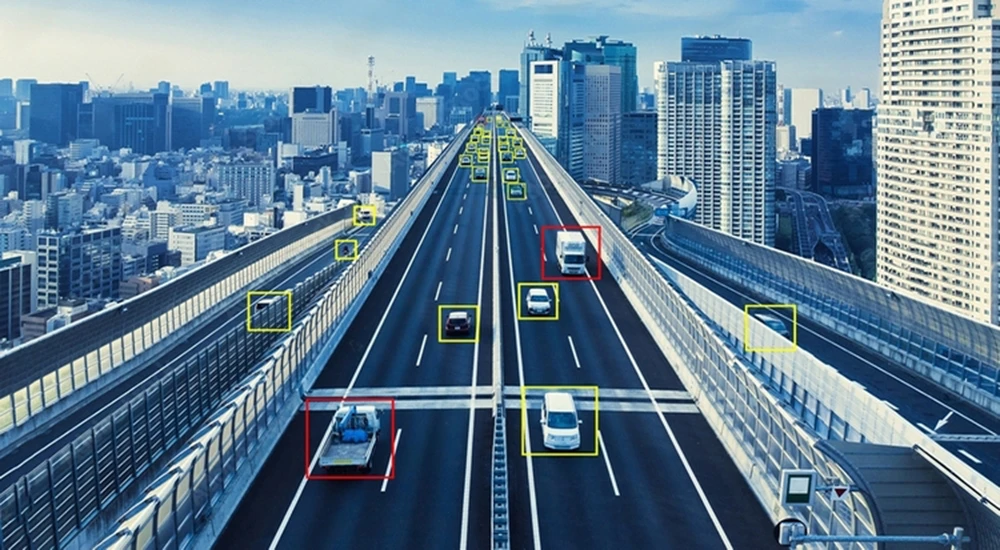Navigating the Future: AI Cameras Transforming Traffic Management for Safer and Smarter Cities
Category: AI Camera
In the bustling arteries of urban landscapes, the integration of artificial intelligence (AI) with traffic management systems is reshaping the way we move. AI cameras, equipped with sophisticated algorithms, are proving to be instrumental in optimizing traffic flow, enforcing regulations, and enhancing overall efficiency. Let’s delve into the innovative ways in which AI cameras are steering us toward smarter and safer cities.
1. Real-time Traffic Pattern Analysis:
- AI cameras are deployed at strategic points across cities to monitor traffic patterns in real-time. Through continuous analysis of video feeds, these cameras capture a wealth of data, including vehicle density, speed, and congestion levels. The ability to process this information on the fly enables traffic management systems to respond dynamically to changing conditions.
Benefits:
Dynamic Signal Optimization
AI algorithms adjust traffic signal timings based on the current flow of vehicles, minimizing congestion and reducing wait times at intersections.
Predictive Analytics
By identifying patterns and trends, AI cameras help predict peak traffic hours, allowing authorities to implement proactive measures and allocate resources efficiently.
2. Automatic License Plate Recognition (ALPR) Systems:
- ALPR systems, powered by AI, have become pivotal in modern traffic management. These systems use cameras to capture license plate information and automatically process it for various applications, ranging from law enforcement to toll collection.
Applications
Traffic Rule Enforcement
AI cameras equipped with ALPR can identify vehicles violating traffic rules, such as running red lights or exceeding speed limits. Automated alerts are sent to law enforcement for swift action.
Enhanced Security
ALPR contributes to enhancing overall security by identifying stolen vehicles or those associated with criminal activities.
3. Smart Toll Collection:
- The integration of AI cameras with toll collection systems has streamlined the process, making it more efficient and reducing bottlenecks at toll booths. ALPR technology enables automatic identification of vehicles, eliminating the need for manual toll collection and reducing traffic congestion.
Advantages
Seamless Tolling Experience
AI cameras with ALPR technology enable non-stop tolling, allowing vehicles to pass through toll booths without the need to stop, enhancing the overall traffic flow.
Reduced Congestion
Eliminating manual toll collection points minimizes queues, reducing the risk of traffic jams around toll booths.
4. Challenges and Considerations:
- While the integration of AI cameras in traffic management brings numerous benefits, it also poses challenges. Privacy concerns related to license plate recognition and the ethical use of surveillance technologies must be carefully addressed. Striking a balance between efficiency and privacy is essential to ensure public acceptance of these innovative systems.
Conclusion
In conclusion, the fusion of AI cameras with traffic management is propelling us toward a future of smarter and safer cities. By harnessing real-time data and automating processes, these technologies not only enhance traffic flow but also contribute to a more sustainable and efficient urban environment. As we navigate this transformative journey, it is crucial to embrace these advancements responsibly, ensuring that the benefits are shared equitably while respecting individual privacy and ethical considerations.
CASE STUDIES
Case Study 1: United States - Atlanta’s Smart Corridor Project
Background:
- Atlanta, Georgia, faced challenges related to traffic congestion, particularly along major corridors leading to the city center.
Implementation:
- The city implemented the Smart Corridor Project, utilizing AI cameras to monitor traffic conditions along key routes. These cameras, equipped with computer vision algorithms, analyze real-time data to detect traffic bottlenecks and dynamically adjust traffic signal timings.
Outcomes:
- The Smart Corridor Project in Atlanta has led to a notable reduction in travel times and improved overall traffic flow. The adaptive signal control system, driven by AI cameras, has proven effective in mitigating congestion during peak hours.
Case Study 2: United Kingdom - London’s Congestion Charge and Traffic Management
Background:
- London faced challenges associated with heavy traffic congestion and the need to reduce vehicle emissions within the city center.
Implementation:
- London implemented a comprehensive Congestion Charge and Traffic Management system, incorporating AI cameras for monitoring and enforcement. These cameras identify vehicles entering the congestion charge zone, automatically billing the owners. AI algorithms also optimize traffic signals and monitor traffic patterns to enhance overall traffic management.
Outcomes:
- The Congestion Charge and Traffic Management system in London has successfully reduced congestion within the city center. AI cameras play a crucial role in enforcing the congestion charge and ensuring that traffic signals adapt to changing conditions, promoting a more efficient transportation network.
Case Study 3: Australia - Sydney’s Intelligent Transport Management System
Background:
- Sydney, Australia, faced challenges related to traffic congestion, especially during peak commuting hours.
Implementation:
- Sydney implemented an Intelligent Transport Management System that integrates AI cameras along key routes. These cameras analyze traffic conditions, identify incidents, and dynamically adjust traffic signal timings. The system also provides real-time information to commuters through electronic signage.
Outcomes:
- The Intelligent Transport Management System in Sydney has resulted in improved traffic flow and reduced congestion. Commuters benefit from a more predictable and efficient transportation experience, thanks to the AI-driven monitoring and adaptive traffic control measures.

